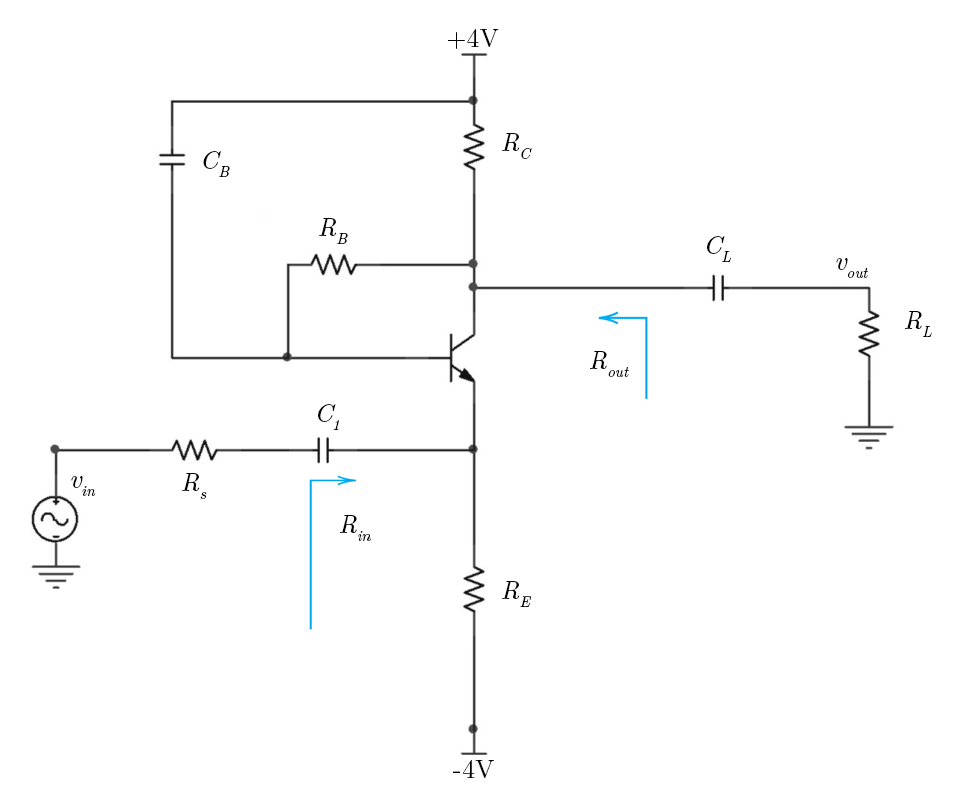Here's a circuit of an amplifier in the CB configuration:

The small-signal equivalent is (using hybrid-pi model)
I want to calculate the input resistance \$R_{in}\$. If I'm not mistaken, the blue arrow in the first picture indicates the direction in which we should look in order to calculate \$R_{in}\$ (looking from the emitter). But if we connect a test source \$v_{x}\$ in parallel to \$R_E\$ we get that $$R_{in} \equiv \frac{v_x}{i_x} = R_E \parallel r_{\pi}$$ (since \$R_E\$ is parallel to \$r_\pi\$).
However according to the answers \$R_{in}=R_E \parallel \frac{r_{\pi}}{\beta + 1}\$ for some reason. I fail to see how is that the case. Any suggestions?


